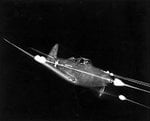Two part question:
What were the "best" strafing aircraft?
- Single engine, fighter type
- Single engine, dive bomber type
- Two engine, heavy fighter type
- Two engine, light bomber type
- Two engine, medium bomber type
- Etc, etc, etc.
What were the best strafing firearms?
- .30, .303, 8mm machine guns
- .50, 13x64B machine guns
- cannon
- Etc.
What were the "best" strafing aircraft?
- Single engine, fighter type
- Single engine, dive bomber type
- Two engine, heavy fighter type
- Two engine, light bomber type
- Two engine, medium bomber type
- Etc, etc, etc.
What were the best strafing firearms?
- .30, .303, 8mm machine guns
- .50, 13x64B machine guns
- cannon
- Etc.

